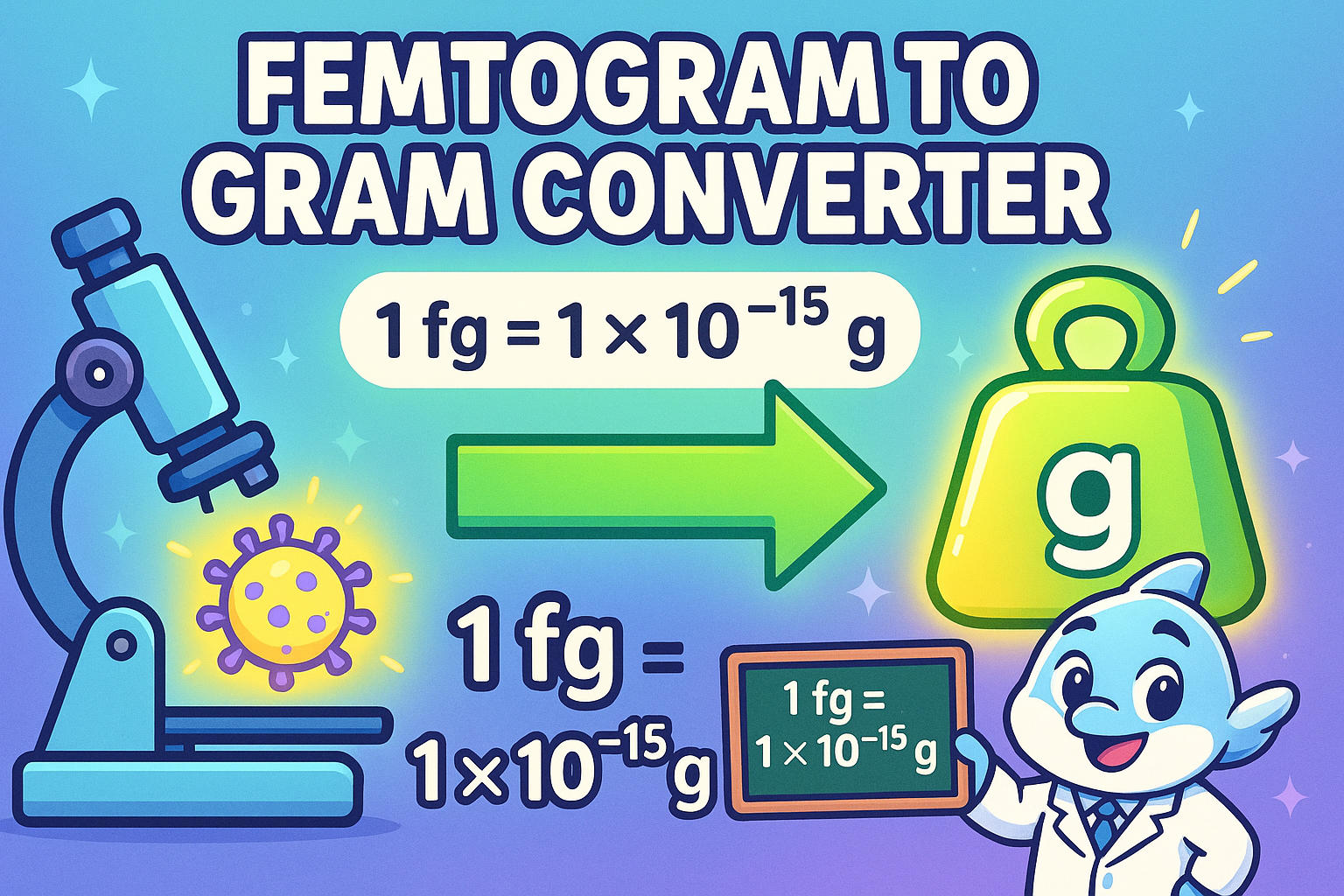femtogram to gram - How to convert fg to g
When you're working with substances at the molecular or atomic scale, accuracy down to the femtogram is essential. This conversion helps professionals in nanotechnology, nuclear science, and ultra-sensitive pharmacology make critical measurements. In this guide, we break down both units, how they relate, and why it matters more than you think.

What is a Femtogram?
A femtogram (fg) is a unit of mass in the metric system equal to one-quadrillionth of a gram.
The femtogram is commonly used in fields like:
-
Molecular chemistry
-
Particle physics
-
Environmental toxin detection
-
Ultra-sensitive biochemical research
Due to the ultra-small nature of this unit, it’s rarely used outside scientific or research-based contexts.
What is a Gram?
A gram (g) is a fundamental unit of mass in the metric system, widely used in everyday life for measuring:
-
Food ingredients
-
Lab samples
-
Medication
-
Small objects
Grams serve as the base reference for most scientific and practical weight measurements. For conversions to and from grams, try our full weight converter.
How to Convert fg to g
Because the femtogram is 1 × 10⁻¹⁵ of a gram, converting is simple but precise:
grams = femtograms × 10⁻¹⁵
This precision matters in research, but you can skip the manual math and use Jetcalculator’s conversion tools for instant accuracy.
Did You Know?
-
A single protein molecule weighs about 1 femtogram. That means researchers can now detect and measure proteins one at a time thanks to femtogram-scale sensitivity.
-
A standard paperclip weighs about 1 gram, making it a handy mental reference for estimating small masses.
-
The LIGO gravitational wave detector uses instruments so sensitive they can detect movement as small as 1 femtogram in mass shift—helping scientists observe events billions of light-years away.
-
In culinary arts, grams are the most reliable unit for baking worldwide. Top chefs and pastry experts use digital gram scales to ensure perfect ratios in high-end recipes.
Tracing a Virus with Femto Precision
In 2013, scientists at ETH Zurich developed a nanomechanical mass spectrometer capable of detecting particles with femtogram-level precision. The breakthrough allowed researchers to weigh individual viruses and biomolecules, enabling early detection of diseases and faster diagnostics. The instrument’s accuracy—measuring shifts of just a few femtograms—opened new frontiers in virology and nano-biotech.
This case illustrates how femtogram-to-gram conversion supports revolutionary advances in medicine and materials science.
.jpg)
Conclusion
Converting femtogram to gram (fg to g) may deal with the smallest imaginable quantities, but the impact is anything but small. From lab analysis to space tech, these conversions drive precision science forward.

